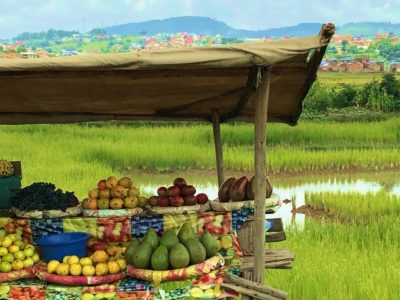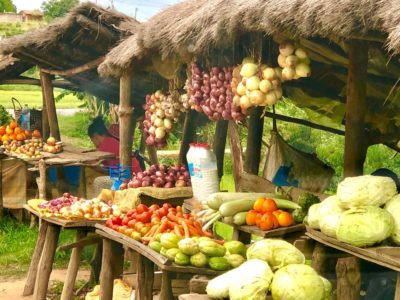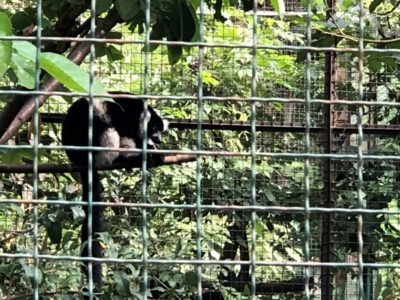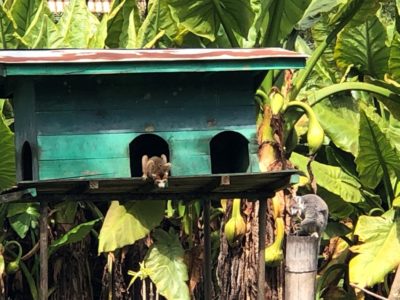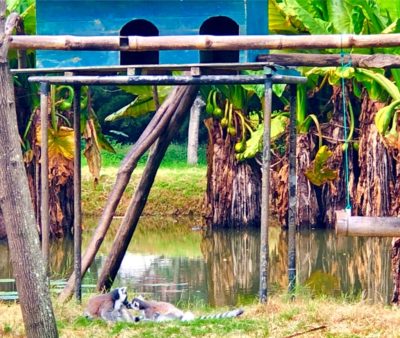Hello Fellow Lemur Lovers and thanks in advance for reading my blog post.
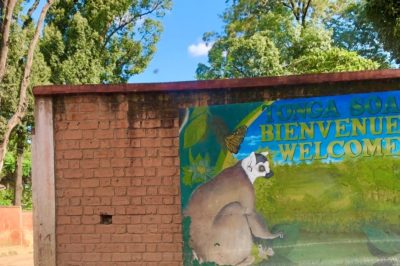
A Little About Me
My name is Domoina and this is my first time blogging about lemurs, so please forgive me if my blogging skills are not top notch yet. As my first name may suggest, I originally come from the beautiful island of Madagascar. I am from Antananarivo (or Tana), the capital city of Madagascar, but I have lived in Canada for the past 4 years. I grew up there in a very French-oriented environment and fairly worldly-minded family, who has always loved to travel and who loves lemurs.
Why Do I Want to Blog about Lemurs?
Firstly, I want to help by sharing information and experiences. I have been fortunate to be able visit a couple of countries around the world and it has inspired me to write. Even though I am not a lemur specialist, a primatologist or any sort of scientist, I would like to contribute the best I can and create awareness around lemurs and my country. Lemurs are highly endangered species and they need to be protected. The most famous one is the Lemur Catta, my favourite one.
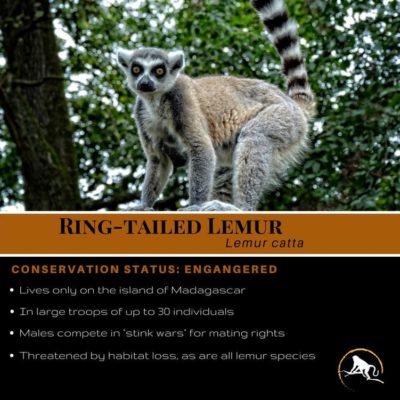
Thanks to the Lemur Conservation Network (LCN) to give me that opportunity. Organizations like LCN are really striving to improve the fate of lemurs in my home country. There was a quote I liked during one of my presentations and I would like to share it:
“If you think you are too small to make a difference, try sleeping with a mosquito in the room” (Dalai Lama)
This summarizes pretty much what I personally think about conservation. I recycle, I do not litter and try to make a difference as a woman coming from an amazing and unique Third World country whenever I can do it, even though it is not always easy.
My First Encounters with Lemurs — The Reserve of Berenty, Fort-Dauphin
Growing up on an island like Madagascar was awesome, but visiting other parts of the island away from Antananarivo was even better.
Madagascar is magical place with so many different types of climate but mostly subtropical. It is humid and we get lots of fruits and vegetables all-year round.
To summarize, there are two distinct seasons: the hot and rainy season between November and the end of March (summer), and the cooler dry season from May to October (winter).
Traveling around Madagascar during the Holidays
My parents, my brother and I used to travel all over the island during the summer or Christmas holidays. It was so cool to get to see the fauna and flora diversity all over the island.
I think my parents wanted my brother and I to get to know more about the beauty of our island, its stunning nature and the different 18 subcultures Malagasy culture encompasses, which looking back now, was something that is really useful in our upbringing.
We used to go by car and usually stayed a couple of days or weeks. I feel really fortunate and grateful they did that with us, because it was a way for us to really appreciate and be aware of what our island has to offer. I remember having seen quite often lemurs living near our hotels or in the national parks we visited. I think I was around 6 or 7 years old when I saw lemurs in real for the first time in my life. My parents planned a vacation in the South of Madagascar at that time, more precisely in Fort-Dauphin. We drove on the national road RN 7 and made a few stopovers on our way.
Visiting the Reserve of Berenty
There, we went to the beach and also visited the Reserve of Berenty. The tour guides made the lemurs come on our shoulders by offering them bananas. That was so cool! Lemurs usually like interacting with humans; there is this mystical connection I have felt with lemurs and I am sure other people have felt too. They trust humans so quickly; I guess that is why they are so vulnerable.
Lemurs are so special to Malagasy people. Not only are they emblematic to the country, but some Malagasy people also believe that, when they die, they reincarnate into lemurs.
I remember seeing at least two main lemur species there: ring-tailed lemurs (lemur catta) and brown lemurs. I am sure there were more species in the Reserve of Berenty; I just can’t remember because I was very young.
I will always remember this first lemur encounter; it was so special. I felt so scared and happy at the same time. I remember their tiny hands trying to take and hold the bananas from my hands.
Lemurs around the Capital City of Antananarivo
The capital city, Antananarivo (also called Tana) is located in the highlands. It is vibrant, colourful, and filled with so many unexpected cultural and historical treasures.
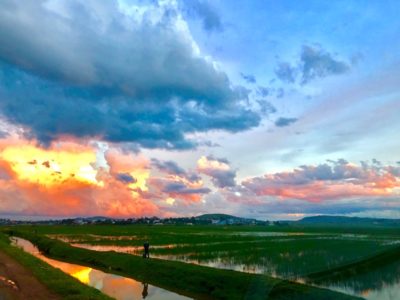
Most people usually travel to Madagascar to see the stunning beaches on the coastal areas. Having grown up in the capital city, I must say that I did not really feel like I was on an island, as the closest beach is around 7-hour drive. It just felt like living any big city, with a subtle mix of modernity and traditions.
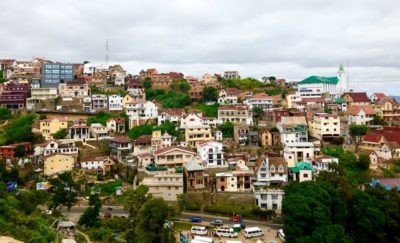
In Tana, you cannot find lemurs in the wild. They are definitely better off free, but since their habitat and lives are critically endangered, many parks, reserves and NGOs like Lemur Conservation Network are striving to save what is left.
During my travels, people often asked me if lemurs could be seen wandering everywhere in Madagascar (which would be awesome by the way). If you live or spend a few days in the capital and wish to spot some lemurs, the only places you can are actually in parks. The answer is no.
Parks in Antananarivo
Some of these parks in Antananarivo are the “Parc Botanique et Zoologique Tsimbazaza”, Lemurs Park and Croc Farm. These are shots of lemurs I spotted at Tsimbazaza about two weeks ago while I am in vacay in Madagascar. Unfortunately, lemurs in parks are mostly kept in cages, which made me feel sad. The best would be to visit national parks and reserves around the island where lemurs can wander freely in the forests!
Lemurs and the Conservation Mindset in Madagascar
The Ancestral Practice of Slash and Burn
Many times during my trips with my family in the 90s, we helplessly saw acres of forests and grasslands burning on the sides of the roads. Maybe some of you have heard of the “slash-and-burn” that has been practiced in Madagascar for centuries.
Originally, this ancestral practice was intended to burn a piece of land to make it more fertile in order to grow rice. Once that piece of land is burned, it is then called “tavy”. However, with time, this practice started to become out of control.
No Concrete Actions from the Government
While rainforests around the capital city Antananarivo and around the entire country started to vanish, I don’t recall having seen any ads or concrete actions from the government that would help prevent or stop these alarming burning practices.
Some NGOs tried to take some actions, but without logistics from the local government, I guess it was impossible. There was nothing such as firefighters or special planes filled with water going to the bushes to stop these fires. They could keep on burning for days, weeks or even months.
A Shift in Mentality about Conservation in Madagascar
Madagascar has lost more than 90% of its rainforests in less than 60 years, but more rapidly the past 20 years.
There has been a real shift in mentalities about conservation in the 80s and 90s I think. I could feel and see it all around me without really knowing what to do. Malagasy people used to be the guardians of the rainforests and the fauna of Madagascar, they now have become their main threat. Unfortunately, with deforestation came many animal species’ loss of habitat and extinction.
Lemurs are one of the most affected species from human actions: they lost their homes; some of them were illegally traded as pets on international markets and finally some were even locally consumed in the villages. Humans are today their only predator, which is a sad situation.
The Impact of the Movie “Madagascar” and its Character King Julian
I decided to write my first blog article in order to share my personal experiences with traveling in different places around the world. While I was growing up on an island filled with unique animal species like lemurs, I noticed that other kids did not know about other parts of the globe. It was mostly thanks to documentaries and North American shows like “Zooboomafoo” in the 90s that they learned about lemurs. I remember seeing that show translated on French TV channels.
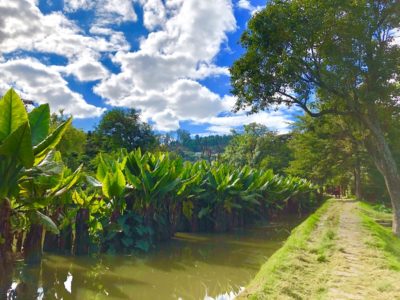
When the animated movie “Madagascar” was released in 2005, I remember that it created such a big word-of-mouth movement (starting with children) around the movie and indirectly around lemurs and my country, which is great! Kids absolutely love King Julian and his other lemur friends!
Confusion and Lack of Awareness about Madagascar
However, despite that movie, people still got mixed up about the exact location of Madagascar on a world map sometimes.
Scientists or people who have a keen interest in nature usually get less confused. They would probably tell you that there are over 60 species of lemurs if I am not mistaken (which I learned myself when preparing a presentation for one of my classes) and that 90% of the fauna and flora in Madagascar can only be found here and nowhere else on Earth. Isn’t that worth a trip to Madagascar, don’t you think?
What are the pros and cons of this confusion and lack of awareness about Madagascar?
Having studied and worked in the International Tourism Development field in Canada, I can say that this confusion or lack of awareness has both pros and cons. Pros can be that Madagascar has managed to avoid mass tourism over the years, which usually became detrimental to most tourist destinations in other parts of the world, mainly due to negative environmental and social effects. Madagascar was kept in a certain way like a secret pristine place,”safe” from most outside threats.
However, cons could be that it has remained sort of isolated (since the end of colonization in 1960) which, combined with continuous political unrest, has led to environmental and social issues, from the inside-out. Tourism in Madagascar could not become a potential catalyst for economic growth and a driver for eco-tourism, as the country was probably perceived as too mysterious and unstable.
Speaking about Lemurs at my University
I have had the opportunity to make several presentations at my university Thompson Rivers University about my home island, its endemic fauna and flora, ad Malagasy culture. I was the only student from Madagascar there and was surprised that each time a lot of students and professors heard about my country for the first time.
And each time I talked about lemurs, people started to be so interested and curious.
Even though I felt a bit sad about those who never heard of Madagascar, I was so proud to be able to be a sort of ambassador for it by sharing my knowledge about such a unique place on Earth (not to brag about that, but Madagascar is truly a great place!). I took two teaching jobs (one teaching French and one teaching English) in Kamloops, Canada, and I had the pleasure to share a bit about my country and lemurs with my multicultural students.
I heard a redundant question: “Why is your home country a developing country if you have so much biodiversity and resources?” And to that question, I always feel sad and almost ashamed to say: “Because of politics, corruption and bad governance of the natural resources”. But this is the unfortunate truth.
Lemurs at the Vancouver Zoo in Canada
I worked for a Canadian tourism company based in Vancouver last year 2018 and had the opportunity to visit the Vancouver Zoo at a point. I must say I had mixed feelings spotting a few lemurs there: I was happy because I think it is great to create awareness around lemurs in zoos in the world, but I was sad too because I know how much better it is to see them in their original habitat, having seen them in the wild when growing up. I hope zoos will not be the only places where lemurs will be found in future!
A Personal Note
To end this first blog article, I would like to say:
Keep sharing awareness and love around Lemurs wherever in the world you are! They are amazing creatures that need to be protected.
And if you have the chance to travel to Madagascar, give back to organizations that really strive to save lemurs and their habitat, like Lemur Conservation Network (LCN).
Conservation starts with each one of us!
My love story with Lemurs and my home country have led me to educate, volunteer and contribute to important causes, which will probably be the topic of my next blog post. I hope your journey brings you to do amazing things too for lemurs and conservation as a whole. Talk to you soon!
“Misaotra” (“Thank you” in Malagasy),
Domoina

